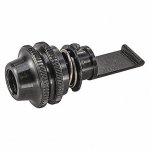ear3
Member
I just discovered that my Starrett combination square (the C11H head) is out of square -- I've triple checked it with all three 12, 18 and 24 rulers I use with it, and have repeated the error with all of them. It's not off by a huge amount, but certainly more than one would accept from Starrett. I've never bumped or dropped it, and with no visual sign of any damage on the head, I can't for the life of me think of when any error would have been introduced. I assume I checked it for square when I first got it, but frankly, I can't remember at this point if I actually did. I tend to use my Woodpeckers more for squaring up material, or setting a fence for mid panel joinery for the Domino, and the Starrett instead for marking off the edge, which is why perhaps I didn't notice it until now if there was a problem from the beginning.
Wondering if anyone had ever had luck going back to Starrett to get them to fix/replace something like this, well after the original purchase (I got the head in 2018)?
Wondering if anyone had ever had luck going back to Starrett to get them to fix/replace something like this, well after the original purchase (I got the head in 2018)?


